Kelly Jensen's Blog, page 139
July 23, 2013
Twitterview: Phoebe North
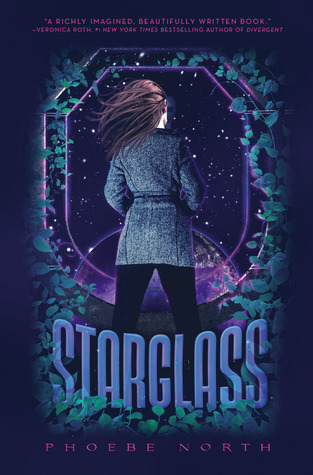
This month's twitterview guest is Phoebe North, debut author of Starglass, which had its book birthday yesterday! She's here to discuss her inspiration for the story, world-building, tired SF tropes, and more. You can read more about North and Starglass at her website, and enter to win a copy of the book at the end of the interview.
Pitch Starglass in 140 characters or fewer.
One girl's coming-of-age on a spaceship where, to survive their 500 year journey, the inhabitants have lived dramatically constrained lives.
What inspired you to write the book?
It started as a grad school assignment, an SF retelling of James Joyce's "Eveline." Revisited it years later and it ballooned from there!
You describe the ship’s society as “casually Jewish” (vs. casually Christian). How much did your own background influence this decision?
Quite a bit! My mother (a Fineberg herself) was raised Orthodox Jewish. I am fascinated by the line between religion and culture in Judaism.
How would you describe Terra?
Terra Fineberg can't get a break. Her mom's dead, her dad's a mess, and she's terribly lonely. But she's got a secret strength inside her.
The world the Asherah is traveling toward is called Zehava. What’s the meaning behind this name?
Hebrew for "gold." It's a Goldilocks planet: not too hot, not too cold. Just right for a human colony--or so they hope!
What about Asherah?
Semitic sky goddess who may have been the consort of god and the Queen of Heaven to the pre-exile Hebrew people.
What was the most fun part of writing the book?
Kissing scenes! And anything involving Mara Stone. I love that little grumpy botanist with all my heart.
Starglass is your debut novel. How long was its journey from idea to publication?
Long! I started the draft in 2010, but the first seed was in a short story written in 2008, and there were four failed novels between.
I loved reading the extra world-building info on your website. What other YA books would you recommend to teens for their world-building?
A Confusion of Princes by Garth Nix! SO GOOD. Also the Earthseed novels by Pamela Sargent and John Christopher's Tripod books.
What about other books about generation ships?
Beth Revis, of course! But Amy Kathleen Ryan's Skychaser books deserve a shout-out, too.
What draws you to writing SF?
I am a big, big nerd who loves robots and spaceships and aliens. Seriously, that is the long & short of it.
What is the most over-used trope in YA SF right now?
Aliens who look just like us (or have no physical bodies) and have no appreciable culture of their own. Also bland human cultures.
What would you like to see more of in YA SF?
Alien and human diversity! More weird, surprising stuff that really pushes philosophical boundaries. Scientists as heroes.
Who do you think is breaking ground in YA right now?
I'm kinda digging this sci-fi revival that's going on!
What did you like to read as a teenager?
Mercedes Lackey (oh, the angst!) and Anne McCaffrey (oh, the dragons!). Their books are written on my heart.
Describe your writing process.
Write all the words (by any means necessary). Sort out the details when you revise.
What’s the best writing advice you ever received?
"Finish the book."
What’s your best writing advice to give?
My process is not your process. Figure out what works for you. Finish the book!
Outside of writing, what do you do with your free time?
Read, walk, garden, snuggle with my cat. I really am a boring introvert, despite what my wacky hair and tattoos might suggest.
You’ve got the conclusion to the Starglass duology coming out next. What other writing projects are you working on?
Some various projects: space school, Cernunnos hunters, magical transhumanism, a girl and her robot. We'll see what happens.
Is there anything more you can tell us about Zehava, or will we just need to wait until the sequel arrives?
One word: ALIENS.
Loading...







 Related StoriesTwitterview: Karen Healey + Giveaway of When We WakeTwitterview: Katie WilliamsTwitterview: Sara Zarr
Related StoriesTwitterview: Karen Healey + Giveaway of When We WakeTwitterview: Katie WilliamsTwitterview: Sara Zarr
Published on July 23, 2013 22:00
July 22, 2013
Starglass by Phoebe North
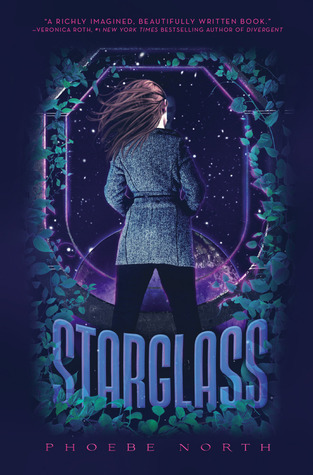
Terra is about to come of age on the Asherah, a generation ship that's been in space for five hundred years. It's approaching its destination, the planet they call Zehava, and hers will be the last generation to grow to adulthood on the ship. Despite this very exciting fact, Terra can't muster much happiness. She's been assigned to work a job that she hates, and her father is a drunk and consumed by his grief for her mother, who died some time ago. The boy she likes seems to only be interested in her prettier friend.
And then, naturally, things get worse. Terra witnesses a terrible act of violence by a soldier on the ship, someone who is supposed to protect them. She's forced to keep it a secret, knowing if she revealed it, her life would be forfeit. She begins to realize that the ruling class of the ship may not have everyone's best interests at heart, that they've overstepped their bounds and may be intending to extend their control of the people of the Asherah beyond the ship, to the planet below. Unsurprisingly for a story like this, Terra finds herself involved in an underground rebellion. Soon, she's asked to do something terrible, but - so they say - necessary, too.
There's a lot of creativity at work in Starglass. In particular, the ship's culture, which is very overtly Jewish, stands out. It's a nice change from the "casually Christian" cultures of so many other SF stories, as North describes on her website. And it fits nicely into the frame story, which adds an interesting and unexpected layer.
The ending, too, is unexpected, but believable as well. In a way, it subverts the expectations many seasoned SF readers will have. I can't begin to count the number of SF books I've read that have telegraphed their endings. It was nice to be surprised. (I'm being cryptic, but I don't want to spoil anything.)
That's not to say all aspects of the story are difficult to guess. Even casual readers will know how Terra's two "romances" (and I use that word loosely here) will play out. But the writing is solid and the story is well-rounded, with a main plot that drives steadily forward while being buoyed by interesting, purposeful subplots. Starglass is not a thrill ride. In many ways it's a cultural study of the Asherah's people, as seen through the eyes of a teenage girl.
I've decided I have an affection for stories about generation ships. The possibilities are so huge (read: aliens and new planets) that it's hard not to get excited about what the author will do. At the same time, it's hard not to be disappointed if and when the author only scratches the surface of what's possible. In Starglass , Terra does not leave the ship. Luckily for us, there's a sequel in the works, and the ending to Starglass leaves no doubt that these possibilities that interest me so will be explored there. It reminds me a lot of the anticipation I felt after finishing Beth Revis' A Million Suns, where the characters were poised to explore the new planet - and North has given us some hints of what her characters will find on Zehava.
This is a natural readalike for Revis' trilogy, though readers should expect a more leisurely story than Revis provides. I'm sure it will be classified as a dystopia by many, but this is just good old-fashioned science fiction, and it should please readers looking for just that.
If this review has piqued your interest, check back tomorrow - we've got a twitterview with the author, plus a giveaway of a finished copy of Starglass.
Review copy via Edelweiss







 Related StoriesVortex by S. J. KincaidOver You by Amy ReedThousand Words by Jennifer Brown
Related StoriesVortex by S. J. KincaidOver You by Amy ReedThousand Words by Jennifer Brown
Published on July 22, 2013 22:00
July 21, 2013
So You Want to Read YA? Guest Post from Brandy Colbert (author of the forthcoming Pointe)
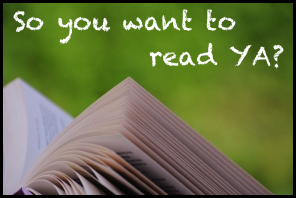
This week's So You Want to Read YA? post comes to us from author Brandy Colbert.
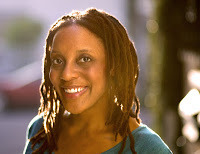
Brandy Colbert grew up in the Missouri Ozarks, holds a bachelor's degree in Journalism, and has worked as an editor for several national magazines. She lives and writes in Los Angeles. Her first novel, Pointe, is forthcoming from G.P. Putnam’s Sons Books for Young Readers/Penguin in April 2014. You can find her at brandycolbert.wordpress.com or hanging out on Twitter @brandycolbert.
I love recommending books to people, whether they’re avid readers or haven’t picked up a novel in months. And even better when I’m introducing someone to YA. Young adult novels have changed a lot since I was a teenager, and for the better. They’re much more prevalent, and YA covers such a wide range of topics that there’s truly something out there for everyone. Yup. Even for the snobbiest of book snobs. My list of favorite YA novels is constantly growing, but here are some of my top picks to get you started:

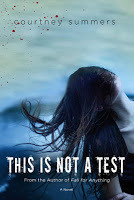
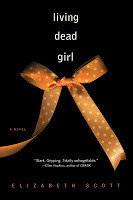
Nothing Like You by Lauren Strasnick is a book I think about often. The protagonist, Holly, starts out making incredibly poor choices from the first page, and yet I found her a multi-layered, sympathetic character from beginning to end. Strasnick’s writing is quietly edgy, and she’s a master of providing depth and emotion in her lovely, oh-so-spare prose.
I was irrationally nervous about This is Not a Test by Courtney Summers before I’d even picked it up. I’m a huge fan of Summers’ books, but zombies? No. And then this book made me care. The situation is bleak: The zombie apocalypse has arrived and we’re thrown into the story of six teens trapped in their high school while the undead rage and tear apart their town. But this is one of the most remarkable character studies I’ve ever read—which made me completely forget I wasn’t interested in zombies after the first chapter.
Living Dead Girl by Elizabeth Scott is majorly tough to get through, despite the fact that it’s less than 200 pages. Scott went there. She wrote a novel from the perspective of an abducted child that leaves no questions about the horrors of such a life. It’s stark and disturbing and the kind of book that will make you set it down mid-scene to get a grip. Alice’s story is impossible to shake, but I think that’s what is so brilliant about this book. Through Alice, Scott deftly reminds us to watch, to care, to never look away from a situation that doesn’t seem right just because it’s easier to ignore.
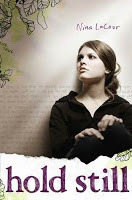
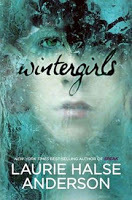
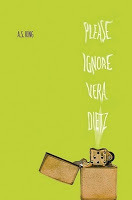
In Hold Still by Nina LaCour, Caitlin’s pain is palpable as she tries to make sense of why her best friend committed suicide. But this book is also hopeful and rewarding, as we see Caitlin heal and learn to trust again. This is a quiet novel that deeply explores grief, love, and forgiveness with beautifully nuanced writing.
Wintergirls by Laurie Halse Anderson uses lyrical, unconventional prose to tell a story that’s unlike any other book I’ve read about anorexia. What I find most engaging is that Anderson truly digs into Lia’s soul, and we’re drawn into her mental illness with no reprieve—which is exactly the type of terrifying, uncomfortable, and heartbreaking experience I love as a reader.
I haven’t stopped talking about Please Ignore Vera Dietz by A.S. King since I put it down two years ago. It’s everything I look for in a story: Vera has a fantastic voice, and her world is serious and funny and painful and weird (there’s a talking pagoda—which somehow works?). This book is real and raw and uncomfortable and so very special.
***
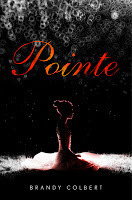
Brandy Colbert's POINTE will be available in April 2014.
You can read the description over at Goodreads.







 Related StoriesSo You Want to Read YA?: Guest Post from Sarah & Laura of Clear Eyes, Full ShelvesSo You Want to Read YA?: Guest Post by E. C. Myers (author of Fair Coin and Quantum Coin)So You Want to Read YA?: Guest Post from Gwenda Bond (author of Blackwood)
Related StoriesSo You Want to Read YA?: Guest Post from Sarah & Laura of Clear Eyes, Full ShelvesSo You Want to Read YA?: Guest Post by E. C. Myers (author of Fair Coin and Quantum Coin)So You Want to Read YA?: Guest Post from Gwenda Bond (author of Blackwood)
Published on July 21, 2013 22:00
When they say don't read the comments . . .
. . . you should totally listen and not read the comments.
Or maybe you need to be a bit of a less sensitive person than I am in order to do so and not walk away feeling a little bit beat up.
I thought the comments over at Book Riot were pretty great. Even though the person causing a bit of a ruckus there was putting on a show, it didn't necessarily turn personal for a couple of days. That's when the community manager stepped in and put a stop to it (and despite what another commenter noted there, the good Dr. did lay out some hate speech, directed at a number of groups. The action for him to be banned and those comments to be deleted were absolutely the right steps to take).
But then the piece went up at The Huffington Post and the comments there were quite a bit different. Many were personal -- I don't suggest clicking through because it's not as interesting or enlightening as those over at Book Riot. There were comments suggesting that YA fiction is crap, that librarians don't know how to do anything but shelve books, and other gems that you can check off your bingo card.
And man, did they hurt.
I don't get worked up about blog posts and people disagreeing with what I have to say. Healthy debate is just that: healthy debate. Attacks that feel more personal, though. They're different.
Nothing was that bad. Nothing was that unexpected.
But when you write for the internet regularly and regularly write for a space that is decidedly welcoming, friendly, and intelligent -- even in the midst of healthy debate -- you can forget other corners of the internet exist.
I've mentioned it once or twice or regularly, but it bears repeating: blogging and sharing any of your work on the web is not easy. It might seem like it is, but it's not. And it's certainly not something I take lightly. This particular post is one I've been working variations of for three weeks or so, and getting it just right meant a hell of a lot to me. So knowing it was well-received at Book Riot, then picked up by the Huffington Post, was a huge honor (it was also tweeted out by NPR Books and shared over at The Dish). Like. I had a piece of my writing run at the Huffington Post. It was on their main page. It was the lead piece in their Books section.
It's really damn cool.
It's also really damn scary because your words are all that are standing. It is a real feeling of being alone and in the spot light (remember when you blog you don't have editors or publishers or an agent or anyone, really, to back you up or remind you you're not crazy). So it really is you there and that's it. Even being as proud and honored and excited as I was, though, those damn comments sucked, even though they were the minority. It's part of our psyche, attaching to the negative much more than attaching to the positive things (and despite what one commenter said, my background includes adolescent developmental psychology).
I'm not sure what I'm going with here, if I'm going anywhere. Maybe it's this: thanks for being the awesome, kind, supportive readers and community that you are. Every person who shared my piece and offered me a nice word -- be it publicly or privately -- I so appreciated it.
Yes, I cried this weekend. Then I watched this awesome video of Lindy West talking about her own work on the internet and how she spent a lot of time crying over comments, too (it was sent to me by a friend).
And then I felt less bad. Also felt less alone or weirdly fixated on a few small nasty things.
I'll never stop writing what I know needs to be said. And I'll never stop sharing those things other people write that need to be said, too. It might take a little while to get full steam again, but I'll find that space again.
This morning, edits for my book popped up in my inbox, and I couldn't help smiling a little bit. The people who thought I was promoting rape or child porn or pushing things into the hands of fragile teen minds who should be protected by people like me, rather than protected from them -- they're going to hate this entire book. I've got a whole chapter about talking with teens about rape, a whole chapter about talking with teens about bullying, as well as bits about the importance of talking about these things openly and honestly with teenagers. And you know? That hate almost feels a little more empowering.







Or maybe you need to be a bit of a less sensitive person than I am in order to do so and not walk away feeling a little bit beat up.
I thought the comments over at Book Riot were pretty great. Even though the person causing a bit of a ruckus there was putting on a show, it didn't necessarily turn personal for a couple of days. That's when the community manager stepped in and put a stop to it (and despite what another commenter noted there, the good Dr. did lay out some hate speech, directed at a number of groups. The action for him to be banned and those comments to be deleted were absolutely the right steps to take).
But then the piece went up at The Huffington Post and the comments there were quite a bit different. Many were personal -- I don't suggest clicking through because it's not as interesting or enlightening as those over at Book Riot. There were comments suggesting that YA fiction is crap, that librarians don't know how to do anything but shelve books, and other gems that you can check off your bingo card.
And man, did they hurt.
I don't get worked up about blog posts and people disagreeing with what I have to say. Healthy debate is just that: healthy debate. Attacks that feel more personal, though. They're different.
Nothing was that bad. Nothing was that unexpected.
But when you write for the internet regularly and regularly write for a space that is decidedly welcoming, friendly, and intelligent -- even in the midst of healthy debate -- you can forget other corners of the internet exist.
I've mentioned it once or twice or regularly, but it bears repeating: blogging and sharing any of your work on the web is not easy. It might seem like it is, but it's not. And it's certainly not something I take lightly. This particular post is one I've been working variations of for three weeks or so, and getting it just right meant a hell of a lot to me. So knowing it was well-received at Book Riot, then picked up by the Huffington Post, was a huge honor (it was also tweeted out by NPR Books and shared over at The Dish). Like. I had a piece of my writing run at the Huffington Post. It was on their main page. It was the lead piece in their Books section.
It's really damn cool.
It's also really damn scary because your words are all that are standing. It is a real feeling of being alone and in the spot light (remember when you blog you don't have editors or publishers or an agent or anyone, really, to back you up or remind you you're not crazy). So it really is you there and that's it. Even being as proud and honored and excited as I was, though, those damn comments sucked, even though they were the minority. It's part of our psyche, attaching to the negative much more than attaching to the positive things (and despite what one commenter said, my background includes adolescent developmental psychology).
I'm not sure what I'm going with here, if I'm going anywhere. Maybe it's this: thanks for being the awesome, kind, supportive readers and community that you are. Every person who shared my piece and offered me a nice word -- be it publicly or privately -- I so appreciated it.
Yes, I cried this weekend. Then I watched this awesome video of Lindy West talking about her own work on the internet and how she spent a lot of time crying over comments, too (it was sent to me by a friend).
And then I felt less bad. Also felt less alone or weirdly fixated on a few small nasty things.
I'll never stop writing what I know needs to be said. And I'll never stop sharing those things other people write that need to be said, too. It might take a little while to get full steam again, but I'll find that space again.
This morning, edits for my book popped up in my inbox, and I couldn't help smiling a little bit. The people who thought I was promoting rape or child porn or pushing things into the hands of fragile teen minds who should be protected by people like me, rather than protected from them -- they're going to hate this entire book. I've got a whole chapter about talking with teens about rape, a whole chapter about talking with teens about bullying, as well as bits about the importance of talking about these things openly and honestly with teenagers. And you know? That hate almost feels a little more empowering.








Published on July 21, 2013 15:12
July 20, 2013
Quick roundup of worthwhile reads
First, my post from Book Riot this week is up at the Huffington Post now, too.
If you didn't go over to the original post at Book Riot, I suggest doing so and spending some time in the comments. One of the original book banners I talked about in the piece has been making his case over and over again. And this morning, he suggests he needs to in order to save the children from people like myself (using my name as an example of who parents need to protect their kids from -- it is weird, strange, bizarre or any other similar-word to see your name being connected to an idea like that).
But despite the show he's caused and still causing there, the ardent and impassioned responses from other people in the comments are great.
My favorite, though, is this. From a 13-year-old:
Dear Dr. Swier, I read the book 'Speak' at age 10...possibly 11, I can't really remember now. I'm thirteen now and have read countless books with much longer and detailed sex scenes than the 7 or 8 lines of "he hurts me he hurts me he zips up his jeans" in Speak. I like to think I make responsible decisions in my reading material as well as my (let's be honest here, nonexistent) sex life. My reading material isn't monitored by my parents or librarians; to be honest, most adults I know are pretty stoked that I read whatever I can get my hands on and think critically about each book.
Reading books with sex scenes has never felt "scandalous" to me, or "turned me on" at all. ("By golly, that was some good porn. Man, that girl got raped by someone she didn't know and lived her life in a depressed haze for the next year, too paralyzed to tell anyone what had happened! I think I'll go round up some of my teenage buddies now and see who'll have sex with me!") Some teenagers have sex sometimes. It's a fact. We know it, I know it, and you know it. Sometimes it's an issue, yes; I would like to argue that sometime's it's a non-issue as well, but that's beside the point. Ignoring the fact of teenage sexuality doesn't cause it to cease to exist. Instead, "squeaky-clean" YA lit and abstinence-only sex ed programs just create a bubble of ignorance around young adults. Trying to blind them to a true fact is ineffective; in fact, once they're eventually (and inevitably) introduced to sex, undereducation may be their downfall as they are more prone to partake in risky behaviors without knowing the consequences. LIKE RAPE.
Dear Dr.Swier, it's rather blatantly obvious that you haven't actually READ "Speak". The entire book is told through a fog of depression in the aftermath of the protagonist's rape at a party. It's clear that the event was utterly traumatic and life-altering and depression-inducing and AWFUL and just bad, bad, bad. If anything, I consider it an eye-opener to much of the YA population on the aftereffects of rape. I'll say this for teenagers: there's some stupid among us who don't think about their actions, and those are the type of people who can/will mature into sexual predators. I really don't think Ms. Anderson wrote Speak as a "don't do this kids" book, but LET'S GIVE SPEAK A CHANCE TO KNOCK SOME SENSE INTO THE AFOREMENTIONED DUNDERHEADS, allright?
And in response to your "rape in the Bible" comment further down this thread: I've read the Holy Christian Bible cover-to-cover as well. I have to say it's more graphic than anything in Speak. THE "SEX SCENE" IN SPEAK READS THUSLY:
"No." No I did not like this. I was on the ground and he was on top of me. My lips mumble something about leaving, about a friend who needs me, about my parents worrying. I can hear myself -- I'm mumbling like a deranged drunk. His lips lock on mine and I can't say anything. I twist my head away. He is so heavy. There is a boulder on me. I open my mouth to breath, to scream, and his hand covers it. In my head, my voice is clear as a bell: "NO I DON’T WANT TO!" But I can't spit it out. I'm trying to remember how we got on the ground and where the moon went and wham! shirt up, shorts down, and the ground smells wet and dark and NO! -- I'm not really here, I'm definitely back at Rachel's crimping my hair and gluing on fake nails, and he smells like beer and mean and he hurts me hurts me hurts me and gets up
and zips his jeans
and smiles.
---------
I don't know how you can call that graphic. It doesn't use the word "penis" or "vagina" (ooh, scary, I know)--nor does it even use the word "sex"! (Or the dreaded f-bomb.) It's to the point and intelligible without being overly descriptive or salacious. (Actually, it's not salacious in the SLIGHTEST. Rape isn't sexy! Rape isn't a turn-on! Reading about rape doesn't make me want to go rape/get raped/have sex!) By your arguments (anything ABOUT rape is PROMOTING rape) this entire comment has promoted rape, which is preposterous. In case you're getting the wrong message here, let me disclose this: Rape is when someone partakes in sexual acts with someone else without that person's consent. (That was about rape.) Rape is awful and shouldn't happen, ever. (Also about rape. Promoting rape..?)
If that doesn't give you shivers, I don't know what will. What a well-spoken, incredibly-reasoned 13-year-old. If nothing else, that is a reminder why I do what it is I do and why I love doing it.
I wanted to share a few other things, too.
Laurie Halse Anderson wrote a response to my post and to the book banner in the comments.
Earlier this year, I wrote a post about how to discuss sex, sexual assault, and rape with teenagers, including a lengthy reading list. I'm resharing it because it's not only important, but it's how we arm teens like the one I quoted above, with the knowledge to come to these sorts of conclusions.
Tanita Davis wrote a wonderful post yesterday about Speaking and Not Speaking and how to tell big stories and little stories, if there's such a thing as one or the other.
One of the bloggers at Backlist Books wrote a great response to my piece that's absolutely worth sharing, too.
This has been a strange week. But if I can make one suggested take away, aside from reading these posts and the comments and yes, sharing my article, it's this: get these books into the hands of those readers who need them. If you haven't read Speak or you haven't read any of the other books listed in my post or in the post I've linked above about discussing topics like rape, please do.








If you didn't go over to the original post at Book Riot, I suggest doing so and spending some time in the comments. One of the original book banners I talked about in the piece has been making his case over and over again. And this morning, he suggests he needs to in order to save the children from people like myself (using my name as an example of who parents need to protect their kids from -- it is weird, strange, bizarre or any other similar-word to see your name being connected to an idea like that).
But despite the show he's caused and still causing there, the ardent and impassioned responses from other people in the comments are great.
My favorite, though, is this. From a 13-year-old:
Dear Dr. Swier, I read the book 'Speak' at age 10...possibly 11, I can't really remember now. I'm thirteen now and have read countless books with much longer and detailed sex scenes than the 7 or 8 lines of "he hurts me he hurts me he zips up his jeans" in Speak. I like to think I make responsible decisions in my reading material as well as my (let's be honest here, nonexistent) sex life. My reading material isn't monitored by my parents or librarians; to be honest, most adults I know are pretty stoked that I read whatever I can get my hands on and think critically about each book.
Reading books with sex scenes has never felt "scandalous" to me, or "turned me on" at all. ("By golly, that was some good porn. Man, that girl got raped by someone she didn't know and lived her life in a depressed haze for the next year, too paralyzed to tell anyone what had happened! I think I'll go round up some of my teenage buddies now and see who'll have sex with me!") Some teenagers have sex sometimes. It's a fact. We know it, I know it, and you know it. Sometimes it's an issue, yes; I would like to argue that sometime's it's a non-issue as well, but that's beside the point. Ignoring the fact of teenage sexuality doesn't cause it to cease to exist. Instead, "squeaky-clean" YA lit and abstinence-only sex ed programs just create a bubble of ignorance around young adults. Trying to blind them to a true fact is ineffective; in fact, once they're eventually (and inevitably) introduced to sex, undereducation may be their downfall as they are more prone to partake in risky behaviors without knowing the consequences. LIKE RAPE.
Dear Dr.Swier, it's rather blatantly obvious that you haven't actually READ "Speak". The entire book is told through a fog of depression in the aftermath of the protagonist's rape at a party. It's clear that the event was utterly traumatic and life-altering and depression-inducing and AWFUL and just bad, bad, bad. If anything, I consider it an eye-opener to much of the YA population on the aftereffects of rape. I'll say this for teenagers: there's some stupid among us who don't think about their actions, and those are the type of people who can/will mature into sexual predators. I really don't think Ms. Anderson wrote Speak as a "don't do this kids" book, but LET'S GIVE SPEAK A CHANCE TO KNOCK SOME SENSE INTO THE AFOREMENTIONED DUNDERHEADS, allright?
And in response to your "rape in the Bible" comment further down this thread: I've read the Holy Christian Bible cover-to-cover as well. I have to say it's more graphic than anything in Speak. THE "SEX SCENE" IN SPEAK READS THUSLY:
"No." No I did not like this. I was on the ground and he was on top of me. My lips mumble something about leaving, about a friend who needs me, about my parents worrying. I can hear myself -- I'm mumbling like a deranged drunk. His lips lock on mine and I can't say anything. I twist my head away. He is so heavy. There is a boulder on me. I open my mouth to breath, to scream, and his hand covers it. In my head, my voice is clear as a bell: "NO I DON’T WANT TO!" But I can't spit it out. I'm trying to remember how we got on the ground and where the moon went and wham! shirt up, shorts down, and the ground smells wet and dark and NO! -- I'm not really here, I'm definitely back at Rachel's crimping my hair and gluing on fake nails, and he smells like beer and mean and he hurts me hurts me hurts me and gets up
and zips his jeans
and smiles.
---------
I don't know how you can call that graphic. It doesn't use the word "penis" or "vagina" (ooh, scary, I know)--nor does it even use the word "sex"! (Or the dreaded f-bomb.) It's to the point and intelligible without being overly descriptive or salacious. (Actually, it's not salacious in the SLIGHTEST. Rape isn't sexy! Rape isn't a turn-on! Reading about rape doesn't make me want to go rape/get raped/have sex!) By your arguments (anything ABOUT rape is PROMOTING rape) this entire comment has promoted rape, which is preposterous. In case you're getting the wrong message here, let me disclose this: Rape is when someone partakes in sexual acts with someone else without that person's consent. (That was about rape.) Rape is awful and shouldn't happen, ever. (Also about rape. Promoting rape..?)
If that doesn't give you shivers, I don't know what will. What a well-spoken, incredibly-reasoned 13-year-old. If nothing else, that is a reminder why I do what it is I do and why I love doing it.
I wanted to share a few other things, too.
Laurie Halse Anderson wrote a response to my post and to the book banner in the comments.
Earlier this year, I wrote a post about how to discuss sex, sexual assault, and rape with teenagers, including a lengthy reading list. I'm resharing it because it's not only important, but it's how we arm teens like the one I quoted above, with the knowledge to come to these sorts of conclusions.
Tanita Davis wrote a wonderful post yesterday about Speaking and Not Speaking and how to tell big stories and little stories, if there's such a thing as one or the other.
One of the bloggers at Backlist Books wrote a great response to my piece that's absolutely worth sharing, too.
This has been a strange week. But if I can make one suggested take away, aside from reading these posts and the comments and yes, sharing my article, it's this: get these books into the hands of those readers who need them. If you haven't read Speak or you haven't read any of the other books listed in my post or in the post I've linked above about discussing topics like rape, please do.








Published on July 20, 2013 06:37
July 18, 2013
A Trio of Adult Romance Reviews
Here at STACKED, we mostly stick to YA. But as I mentioned a few weeks ago, I enjoy reading adult romances, though I hadn't done so in quite some time. After finding all of Julia Quinn's Bridgerton books for sale at my local library, I impulse-bought them (not hard to do when they're only 25 cents each) and then spent the next several days reading almost every single one.
Then, naturally, I did some reading online and picked up a few other romances by authors I hadn't read before (all historical Regency-era). Reading these books has broken me out of a reading rut like magic; the three below are some of those I've enjoyed most.
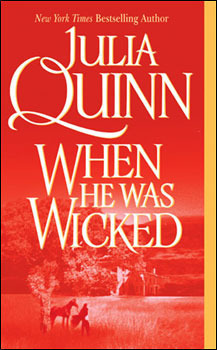
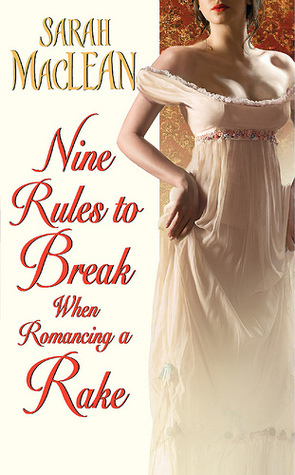
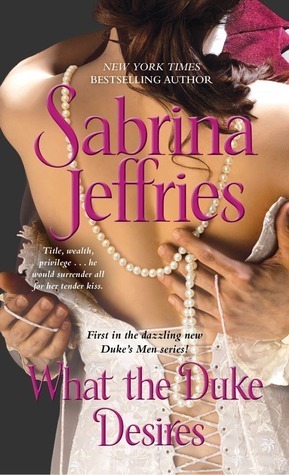
When He Was Wicked by Julia Quinn
You guys. This book. This may be the perfect romance novel. It features Francesca Bridgerton, the sixth Bridgerton sibling, and she's actually already married at the beginning of the book. Her husband is John Stirling, the Earl of Kilmartin, and they love each other very much. And then he dies, after a mere two years of marriage. John's cousin, Michael, is now the Earl, and he's wracked with all sorts of uncomfortable emotions. He's loved Francesca all along, you see, but he also loved his cousin, whom he regarded as more of a brother.
You know what's going to eventually happen, but seeing the two leads work their way through their grief for a man they both loved very much is gratifying and incredibly moving. Francesca's attraction and eventual love for Michael develops gradually and believably. I loved reading a book where the hero loved the heroine from afar for years, rather than the opposite, which seems to happen much more frequently. All of Julia Quinn's trademarks are here: funny repartee between the two leads, crackling wit from ancillary characters, families who love and support each other and embrace their differences.
Personal copy
Nine Rules to Break When Romancing a Rake by Sarah MacLean
I don't think there's any author I like as much as Julia Quinn when it comes to romances, but Sarah MacLean is a good alternative. Lady Calpurnia Hartwell is 28 and has given up on finding a husband. Her younger sister (by 10 years) has just become engaged, and while listening in on her sister's conversation with her new fiance, Callie learns that she's perceived as passive by most of society. She's always made sure to keep her reputation spotless, but now that she's sure she won't ever marry, she doesn't see much point. So she makes herself a list. Nine things - nine non-passive things - she'll do to have a little fun and start living, the way she's been afraid to for a decade. Things like smoking a cheroot, and gambling at a men's club, and drinking whiskey at a bar. And, of course, being kissed. That tops her list, and she knows just who she wants to help her cross that particular item off.
Gabriel St. John is the Marquess of Ralston, and Callie has loved him afar for ten years, ever since her first season when he spoke to her briefly and made her feel better about her horrid dress, which made her look ridiculous. He had forgotten the conversation long ago, but Callie never did. And when Callie shows up at his home, daring to make him the person who bestows upon her that first kiss...well, you know where this is heading.
Honestly, I was hoping that Callie would be a bit more proactive when it came to her list. She resolves to do something rather extraordinary, and then when it comes down to it, she holds back. It's understandable, but I wanted to see her fully commit to at least one item without prodding from Ralston. Ralston remains a bit of an enigma throughout the book, as well, and there's a bit at the end (that's a bit of spoiler) that was quite off-putting and dropped this to a 3-star read for me (plus some questionable remarks about Ralston's absent, now-deceased, mother). All that aside, this was a thoroughly engaging story with an interesting subplot featuring Ralston's half-sister. I liked seeing Callie come into her own, and her pursuit of the items on her list created wonderful comedic moments.
Borrowed from the library
What the Duke Desires by Sabrina Jeffries
Lisette Bonnaud is the illegitimate daughter of a viscount and his French mistress. When her father died without ever marrying her mother, her half-brother, the legitimate son, cut her and her brother Tristan off completely. Luckily for Lisette and Tristan, their other half-brother, the younger legitimate son named Dom, took them in so they could survive, to his detriment; as a result, his older brother cut him off too. They make money to survive by running a private investigation agency, and Lisette longs to take a more active role in it.
Maximilian Cale is the Duke of Lyons, and he inherited the title after his older brother Peter was kidnapped and eventually declared dead. But then he receives a note from Tristan Bonnaud, claiming he has proof that Peter is still alive. Tristan misses the arranged meeting with Max, and Max is so put out by it that he tracks down the Bonnaud residence in England, where he meets Lisette. Long story short, they team up as a faux married couple and travel to France to investigate Tristan's disappearance. Lisette hopes to prove to Max that Tristan is not a con man, and Max hopes to figure out what happened to Peter once and for all - or make Tristan pay for the lie.
I rather like romances that include a mystery, and this is a fun one. It gets a bit convoluted at the end, but it's never uninteresting. What's really important is the chemistry between the two leads, which is great. I love good repartee, and they have it. Lisette is the most assertive of the three heroines I discuss in this post. She has almost no qualms about haring off to France with Max in tow, and her actions are motivated by love of family. She knows what she wants and she knows she's smart enough to get it. Max is...not my favorite hero. Alas. Nothing beats a Bridgerton book.
Review copy received from publisher






 Related StoriesOver You by Amy ReedVortex by S. J. KincaidThousand Words by Jennifer Brown
Related StoriesOver You by Amy ReedVortex by S. J. KincaidThousand Words by Jennifer Brown
Then, naturally, I did some reading online and picked up a few other romances by authors I hadn't read before (all historical Regency-era). Reading these books has broken me out of a reading rut like magic; the three below are some of those I've enjoyed most.



When He Was Wicked by Julia Quinn
You guys. This book. This may be the perfect romance novel. It features Francesca Bridgerton, the sixth Bridgerton sibling, and she's actually already married at the beginning of the book. Her husband is John Stirling, the Earl of Kilmartin, and they love each other very much. And then he dies, after a mere two years of marriage. John's cousin, Michael, is now the Earl, and he's wracked with all sorts of uncomfortable emotions. He's loved Francesca all along, you see, but he also loved his cousin, whom he regarded as more of a brother.
You know what's going to eventually happen, but seeing the two leads work their way through their grief for a man they both loved very much is gratifying and incredibly moving. Francesca's attraction and eventual love for Michael develops gradually and believably. I loved reading a book where the hero loved the heroine from afar for years, rather than the opposite, which seems to happen much more frequently. All of Julia Quinn's trademarks are here: funny repartee between the two leads, crackling wit from ancillary characters, families who love and support each other and embrace their differences.
Personal copy
Nine Rules to Break When Romancing a Rake by Sarah MacLean
I don't think there's any author I like as much as Julia Quinn when it comes to romances, but Sarah MacLean is a good alternative. Lady Calpurnia Hartwell is 28 and has given up on finding a husband. Her younger sister (by 10 years) has just become engaged, and while listening in on her sister's conversation with her new fiance, Callie learns that she's perceived as passive by most of society. She's always made sure to keep her reputation spotless, but now that she's sure she won't ever marry, she doesn't see much point. So she makes herself a list. Nine things - nine non-passive things - she'll do to have a little fun and start living, the way she's been afraid to for a decade. Things like smoking a cheroot, and gambling at a men's club, and drinking whiskey at a bar. And, of course, being kissed. That tops her list, and she knows just who she wants to help her cross that particular item off.
Gabriel St. John is the Marquess of Ralston, and Callie has loved him afar for ten years, ever since her first season when he spoke to her briefly and made her feel better about her horrid dress, which made her look ridiculous. He had forgotten the conversation long ago, but Callie never did. And when Callie shows up at his home, daring to make him the person who bestows upon her that first kiss...well, you know where this is heading.
Honestly, I was hoping that Callie would be a bit more proactive when it came to her list. She resolves to do something rather extraordinary, and then when it comes down to it, she holds back. It's understandable, but I wanted to see her fully commit to at least one item without prodding from Ralston. Ralston remains a bit of an enigma throughout the book, as well, and there's a bit at the end (that's a bit of spoiler) that was quite off-putting and dropped this to a 3-star read for me (plus some questionable remarks about Ralston's absent, now-deceased, mother). All that aside, this was a thoroughly engaging story with an interesting subplot featuring Ralston's half-sister. I liked seeing Callie come into her own, and her pursuit of the items on her list created wonderful comedic moments.
Borrowed from the library
What the Duke Desires by Sabrina Jeffries
Lisette Bonnaud is the illegitimate daughter of a viscount and his French mistress. When her father died without ever marrying her mother, her half-brother, the legitimate son, cut her and her brother Tristan off completely. Luckily for Lisette and Tristan, their other half-brother, the younger legitimate son named Dom, took them in so they could survive, to his detriment; as a result, his older brother cut him off too. They make money to survive by running a private investigation agency, and Lisette longs to take a more active role in it.
Maximilian Cale is the Duke of Lyons, and he inherited the title after his older brother Peter was kidnapped and eventually declared dead. But then he receives a note from Tristan Bonnaud, claiming he has proof that Peter is still alive. Tristan misses the arranged meeting with Max, and Max is so put out by it that he tracks down the Bonnaud residence in England, where he meets Lisette. Long story short, they team up as a faux married couple and travel to France to investigate Tristan's disappearance. Lisette hopes to prove to Max that Tristan is not a con man, and Max hopes to figure out what happened to Peter once and for all - or make Tristan pay for the lie.
I rather like romances that include a mystery, and this is a fun one. It gets a bit convoluted at the end, but it's never uninteresting. What's really important is the chemistry between the two leads, which is great. I love good repartee, and they have it. Lisette is the most assertive of the three heroines I discuss in this post. She has almost no qualms about haring off to France with Max in tow, and her actions are motivated by love of family. She knows what she wants and she knows she's smart enough to get it. Max is...not my favorite hero. Alas. Nothing beats a Bridgerton book.
Review copy received from publisher







 Related StoriesOver You by Amy ReedVortex by S. J. KincaidThousand Words by Jennifer Brown
Related StoriesOver You by Amy ReedVortex by S. J. KincaidThousand Words by Jennifer Brown
Published on July 18, 2013 22:00
Post on Adults Fearing YA at Book Riot

Over at Book Riot today, I wrote about what it is that grown-ups fear about YA books. I wrote and rewrote and rerewrote this post many times over the last few weeks, so I am thrilled by the response. Even the crazy troll response hit the nail on the head.







 Related StoriesFeminist YA over at Book Riot
Related StoriesFeminist YA over at Book Riot
Published on July 18, 2013 18:56
July 17, 2013
What are actual teens reading this summer?
This year's summer reading club at my library is almost over -- it ends in exactly one week. One of the best parts of this program is that the set up here is such that I can actually see exactly what my teens are reading and enjoying. We ask teens to read a book, write down the title and author, and whether or not they would recommend it to other readers.
What's most interesting to me in the teen reading habits is that we're able to see what they enjoy for fun outside of school, and we're able to see that teens aren't just reading the newest and shiniest books. They certainly are, but they're also reading a healthy amount of back list titles, and there are teens who are discovering authors and reading that author's entire catalog of available titles. They're reading a range of fiction and non-fiction as well.
Seeing what teens are reading has certainly given me a lot of ideas for future book displays, and it's given me a great idea of what areas of interest and genres can use more books in our collection. Worth noting is that a good number of the books below were titles I'd put on display this summer. I did four displays: one of time travel/parallel world stories, one of zombies, one of mysteries/thrillers/spy stories, and one that was a mix of mermaid and water related stories and covers. If you don't think doing book displays gets stuff moving, I'd like to argue otherwise! I doubt some of the books that got read would have if I didn't pull them out from the stacks.
Obviously, this isn't everything that teens are reading, since that would be seven or eight posts long. But this should give a flavor for what it is they're finding and enjoying. All of these are recommended reads from my kids. Maybe what excites me most is that of the hundreds of books they've read this summer so far, maybe 2 or 3 were not recommended.
Rather than make this just a list of book titles, I'm including WorldCat descriptions as well. I've noted where I had a title in a display, too.
Also worth noting -- my kids are reading many books featuring diversity in some capacity, both fiction and non-fiction.
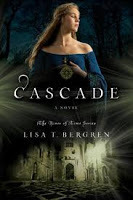
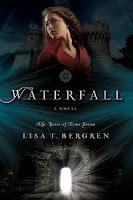
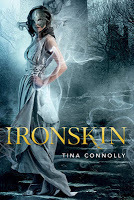
Cascade by Lisa T. Bergren: When Gabi and Lia return to medieval Italy with their mother, they find a heroes' welcome from the people of Siena and enemies that wish them dead. (Time travel)
Waterfall by Lisa T. Bergren: Maybe most American teens would love a Mediterranean vacation, but the Bentarrini sisters are stuck in Italy every summer with their archaeologist parents! Young Gabi is bored out of her mind . . . until she's swept into the 14th century and a whole new world filled with knights, horses, armor, swords, and great-looking Italian guys! (Time travel)
Ironskin by Tina Connolly: Jane Eliot wears an iron mask. It's the only way to contain the fey curse that scars her cheek. The Great War is five years gone, but its scattered victims remain--the ironskin. When a carefully worded listing appears for a governess to assist with a "delicate situation"--a child born during the Great War--Jane is certain the child is fey-cursed, and that she can help. Teaching the unruly Dorie to suppress her curse is hard enough; she certainly didn't expect to fall for the girl's father, the enigmatic artist Edward Rochart. But her blossoming crush is stifled by her scars and by his parade of women. Ugly women, who enter his closed studio...and come out as beautiful as the fey. Jane knows Rochart cannot love her, just as she knows that she must wear iron for the rest of her life. But what if neither of these things are true? Step by step Jane unlocks the secrets of a new life--and discovers just how far she will go to become whole again.
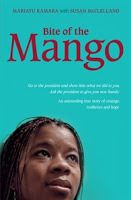
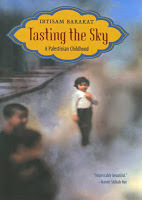
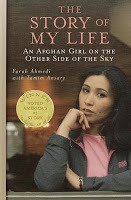
Bite of the Mango by Mariatu Kamara: When Mariatu set out for a neighborhood village in Sierra Leone, she was kidnapped and tortured, and both of her hands cut off. She turned to begging to survive. This heart-rending memoir is a testament to her courage and resilience. Today she is a UNICEF Special Representative for Children and Armed Conflict.
Tasting the Sky: A Palestinian Childhood by Ibtisam Barakat: "When a war ends it does not go away," my mother says. "It hides inside us . . . Just forget!" But I do not want to do what Mother says . . . I want to remember. In this groundbreaking memoir set in Ramallah during the aftermath of the 1967 Six-Day War, Ibtisam Barakat captures what it is like to be a child whose world is shattered by war. With candor and courage, she stitches together memories of her childhood: fear and confusion as bombs explode near her home and she is separated from her family; the harshness of life as a Palestinian refugee; her unexpected joy when she discovers Alef, the first letter of the Arabic alphabet. This is the beginning of her passionate connection to words, and as language becomes her refuge, allowing her to piece together the fragments of her world, it becomes her true home. Transcending the particulars of politics, this illuminating and timely book provides a telling glimpse into a little-known culture that has become an increasingly important part of the puzzle of world peace.
The Story of My Life: An Afghan Girl on the Other Side of the Sky by Farah Ahmedi: Ahmedi was born just as the war between the mujahideen and the Soviets reaches its peak in Afghanistan. The sounds of gunfire and fighter planes were as normal to her as the sounds of traffic or children playing are to a schoolgirl in America. When she stepped on a land mine on her way to school, she began to learn--slowly--that ordinary people, often strangers, have immense power to save lives and restore hope. She was taken from a childhood in Afghanistan, where the classrooms are naked chambers with only chalkboards on the walls and are filled with more students than seats (and no books), to a Chicago adolescence, where teenagers struggle to decide whether to try out for school plays, whom to take to the homecoming dance, and where to go to college.
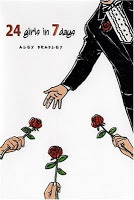
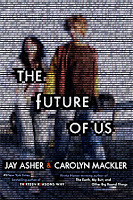
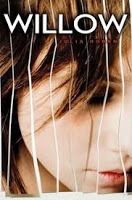
24 Girls in 7 Days by Alex Bradley: Jack Grammar, average American senior, has no date to the prom. Or so he thinks. Percy and Natalie, Jack's so-called best friends, post an ad in the classified section of the online version of the school newspaper. They figure it couldn't hurt. After all, there's not much in this world sadder than Jack's love life. Soon Percy and Natalie have assembled a list of girls eager to go to the prom with Jack, including one mysterious girl known only as FancyPants. He has just seven days to meet and date them before he will ask one special girl to the prom.
The Future of Us by Jay Asher and Carolyn Mackler: It's 1996, and less than half of all American high school students have ever used the Internet. Emma just got her first computer and Josh is her best friend. They power up and log on--and discover themselves on Facebook, fifteen years in the future. Everybody wonders what their Destiny will be. Josh and Emma are about to find out. (Time travel)
Willow by Julia Hoban: Sixteen-year-old Willow, who was driving the car that killed both of her parents, copes with the pain and guilt by cutting herself, until she meets a smart and sensitive boy who is determined to help her stop.
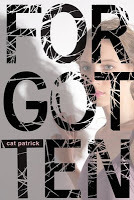
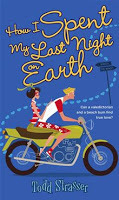
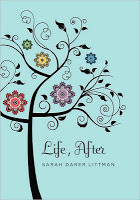
Forgotten by Cat Patrick: Sixteen-year-old London Lane forgets everything each night and must use notes to struggle through the day, even to recall her wonderful boyfriend, but she "remembers" future events and as her "flashforwards" become more disturbing she realizes she must learn more about the past lest it destroy her future. (Time travel)
How I Spent My Last Night on Earth by Todd Strasser: When a rumor appears on the Internet that a giant asteroid is about to destroy Earth, Legs Hanover scrambles to meet the boy of her dreams, elusive Andros Bliss.
Life, After by Sarah Darer Littman: When poverty forces her family to leave their home in Buenos Aires, Argentina, Dani has a hard time adjusting to life in New York City, where everything is different except her father's anger, but an unlikely bond she forms with a wealthy, spoiled girl at school helps heal both of their families.
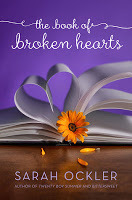
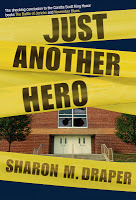
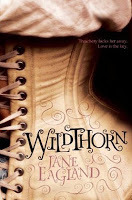
The Book of Broken Hearts by Sarah Ockler: Jude has learned a lot from her older sisters, but the most important thing is this: The Vargas brothers are notorious heartbreakers. But as Jude begins to fall for Emilio Vargas, she begins to wonder if her sisters were wrong.
Just Another Hero by Sharon Draper: As Kofi, Arielle, Dana, November, and Jericho face personal challenges during their last year of high school, a misunderstood student brings a gun to class and demands to be taken seriously.
Wildthorn by Jane Eagland: Seventeen-year-old Louisa Cosgrove is locked away in the Wildthorn Hall mental institution, where she is stripped of her identity and left to wonder who has tried to destroy her life.
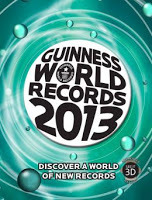
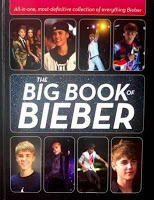
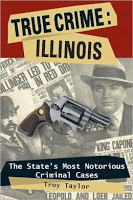
Guinness World Records 2013: You probably don't need a description here.
The Big Book of Beiber: You also probably don't need a description here.
True Crime: Illinois: I'm going to go ahead and skip the description on this one, as well.
(Though can I say I love letting kids read stuff like this and counting it toward their summer reading? Because the thing is, it's reading. And it's reading exactly what it is that interests and fascinates them).
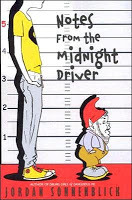

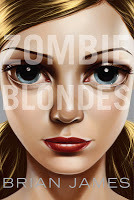
Notes from the Midnight Driver by Jordan Sonnenblick: After being assigned to perform community service at a nursing home, sixteen-year-old Alex befriends a cantankerous old man who has some lessons to impart about jazz guitar playing, love, and forgiveness.
Violet by Design by Melissa Walker: Despite her intentions to give up runway modeling, eighteen-year-old Violet is lured back by the promise of travel to Brazil, possibly Spain and France, and, after seeing her best friends off to college, embarks on an, often exciting, often painful, international adventure.
Zombie Blondes by Brian James: Each time fifteen-year-old Hannah and her out-of-work father move she has some fears about making friends, but a classmate warns her that in Maplecrest, Vermont, the cheerleaders really are monsters. (zombies -- and multiple mentions by different readers!)
Authors and Series Reads
A number of authors and series appeared over and over so far. I'm going to tease out the authors and just show one of the books from popular series being read.
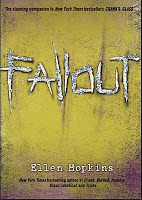
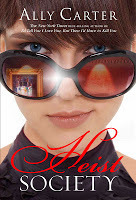
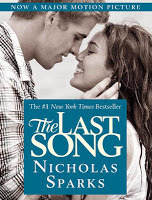
Ellen Hopkins: I think every single one of her books was read this summer so far. Some of them had been read multiple times by different teens.
Ally Carter: My teens are rabid about her books, and not only are they rabid, they're very opinionated about which of the series is better.
Nicholas Sparks: He may not write books for teens, but teens love reading his books anyway.
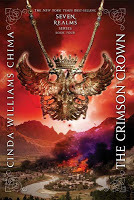

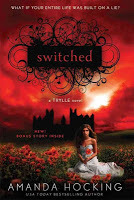
Cinda Williams Chima: High fantasy fans abound.
The Sisterhood of the Traveling Pants series still has a ton of readers at my library.
Amanda Hocking: I can't keep up with how many series she has going, but my teens continue to read them like crazy.
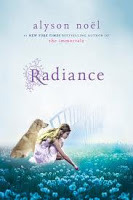
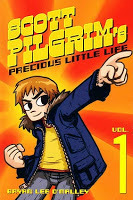
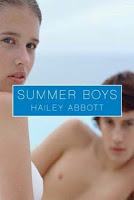
All of Alyson Noel's books have been circulating with the teens this summer, as have the Summer Boys books by Hailey Abbott.
But maybe my favorite thing all summer so far is that I had a pile of rave recommendations (with actual notes -- "I LOVE this series" -- which I don't require in my club) for Scott Pilgrim by Bryan Lee O'Malley. When we had our first program this summer, one girl told me repeatedly she didn't want to sign up for the club because she doesn't read. She began to pore over a movie guide to The Hunger Games and I pointed out that what she was doing counted as reading. "No way," she said, "This doesn't count." I assured her it did. She ended up signing up for the program, after winning the entire Scott Pilgrim series as a door prize.
Turns out, she not only is a reader, but she pretty much loves reading, too.
And because I am having fun looking through these books, here are a handful of other titles that popped up so far this summer:
When You Reach Me by Rebecca Stead
Unearthly by Cynthia Hand
Witch and Wizard and Daniel X by James Patterson
The Babysitter's Club series by Ann M. Martin (When I saw this pop up more than once in my box, it warmed my heart -- they're still being read!)
Dark Triumph by Robin LaFevers
Just Listen by Sarah Dessen
Harry Potter series
The Mysterious Benedict Society
Nerve by Jeanne Ryan
Lemonade Mouth
Elixir by Hilary Duff
The Goddess Inheritance by Aimee Carter







 Related StoriesTitle DoublesOver You by Amy ReedVortex by S. J. Kincaid
Related StoriesTitle DoublesOver You by Amy ReedVortex by S. J. Kincaid
What's most interesting to me in the teen reading habits is that we're able to see what they enjoy for fun outside of school, and we're able to see that teens aren't just reading the newest and shiniest books. They certainly are, but they're also reading a healthy amount of back list titles, and there are teens who are discovering authors and reading that author's entire catalog of available titles. They're reading a range of fiction and non-fiction as well.
Seeing what teens are reading has certainly given me a lot of ideas for future book displays, and it's given me a great idea of what areas of interest and genres can use more books in our collection. Worth noting is that a good number of the books below were titles I'd put on display this summer. I did four displays: one of time travel/parallel world stories, one of zombies, one of mysteries/thrillers/spy stories, and one that was a mix of mermaid and water related stories and covers. If you don't think doing book displays gets stuff moving, I'd like to argue otherwise! I doubt some of the books that got read would have if I didn't pull them out from the stacks.
Obviously, this isn't everything that teens are reading, since that would be seven or eight posts long. But this should give a flavor for what it is they're finding and enjoying. All of these are recommended reads from my kids. Maybe what excites me most is that of the hundreds of books they've read this summer so far, maybe 2 or 3 were not recommended.
Rather than make this just a list of book titles, I'm including WorldCat descriptions as well. I've noted where I had a title in a display, too.
Also worth noting -- my kids are reading many books featuring diversity in some capacity, both fiction and non-fiction.



Cascade by Lisa T. Bergren: When Gabi and Lia return to medieval Italy with their mother, they find a heroes' welcome from the people of Siena and enemies that wish them dead. (Time travel)
Waterfall by Lisa T. Bergren: Maybe most American teens would love a Mediterranean vacation, but the Bentarrini sisters are stuck in Italy every summer with their archaeologist parents! Young Gabi is bored out of her mind . . . until she's swept into the 14th century and a whole new world filled with knights, horses, armor, swords, and great-looking Italian guys! (Time travel)
Ironskin by Tina Connolly: Jane Eliot wears an iron mask. It's the only way to contain the fey curse that scars her cheek. The Great War is five years gone, but its scattered victims remain--the ironskin. When a carefully worded listing appears for a governess to assist with a "delicate situation"--a child born during the Great War--Jane is certain the child is fey-cursed, and that she can help. Teaching the unruly Dorie to suppress her curse is hard enough; she certainly didn't expect to fall for the girl's father, the enigmatic artist Edward Rochart. But her blossoming crush is stifled by her scars and by his parade of women. Ugly women, who enter his closed studio...and come out as beautiful as the fey. Jane knows Rochart cannot love her, just as she knows that she must wear iron for the rest of her life. But what if neither of these things are true? Step by step Jane unlocks the secrets of a new life--and discovers just how far she will go to become whole again.



Bite of the Mango by Mariatu Kamara: When Mariatu set out for a neighborhood village in Sierra Leone, she was kidnapped and tortured, and both of her hands cut off. She turned to begging to survive. This heart-rending memoir is a testament to her courage and resilience. Today she is a UNICEF Special Representative for Children and Armed Conflict.
Tasting the Sky: A Palestinian Childhood by Ibtisam Barakat: "When a war ends it does not go away," my mother says. "It hides inside us . . . Just forget!" But I do not want to do what Mother says . . . I want to remember. In this groundbreaking memoir set in Ramallah during the aftermath of the 1967 Six-Day War, Ibtisam Barakat captures what it is like to be a child whose world is shattered by war. With candor and courage, she stitches together memories of her childhood: fear and confusion as bombs explode near her home and she is separated from her family; the harshness of life as a Palestinian refugee; her unexpected joy when she discovers Alef, the first letter of the Arabic alphabet. This is the beginning of her passionate connection to words, and as language becomes her refuge, allowing her to piece together the fragments of her world, it becomes her true home. Transcending the particulars of politics, this illuminating and timely book provides a telling glimpse into a little-known culture that has become an increasingly important part of the puzzle of world peace.
The Story of My Life: An Afghan Girl on the Other Side of the Sky by Farah Ahmedi: Ahmedi was born just as the war between the mujahideen and the Soviets reaches its peak in Afghanistan. The sounds of gunfire and fighter planes were as normal to her as the sounds of traffic or children playing are to a schoolgirl in America. When she stepped on a land mine on her way to school, she began to learn--slowly--that ordinary people, often strangers, have immense power to save lives and restore hope. She was taken from a childhood in Afghanistan, where the classrooms are naked chambers with only chalkboards on the walls and are filled with more students than seats (and no books), to a Chicago adolescence, where teenagers struggle to decide whether to try out for school plays, whom to take to the homecoming dance, and where to go to college.



24 Girls in 7 Days by Alex Bradley: Jack Grammar, average American senior, has no date to the prom. Or so he thinks. Percy and Natalie, Jack's so-called best friends, post an ad in the classified section of the online version of the school newspaper. They figure it couldn't hurt. After all, there's not much in this world sadder than Jack's love life. Soon Percy and Natalie have assembled a list of girls eager to go to the prom with Jack, including one mysterious girl known only as FancyPants. He has just seven days to meet and date them before he will ask one special girl to the prom.
The Future of Us by Jay Asher and Carolyn Mackler: It's 1996, and less than half of all American high school students have ever used the Internet. Emma just got her first computer and Josh is her best friend. They power up and log on--and discover themselves on Facebook, fifteen years in the future. Everybody wonders what their Destiny will be. Josh and Emma are about to find out. (Time travel)
Willow by Julia Hoban: Sixteen-year-old Willow, who was driving the car that killed both of her parents, copes with the pain and guilt by cutting herself, until she meets a smart and sensitive boy who is determined to help her stop.



Forgotten by Cat Patrick: Sixteen-year-old London Lane forgets everything each night and must use notes to struggle through the day, even to recall her wonderful boyfriend, but she "remembers" future events and as her "flashforwards" become more disturbing she realizes she must learn more about the past lest it destroy her future. (Time travel)
How I Spent My Last Night on Earth by Todd Strasser: When a rumor appears on the Internet that a giant asteroid is about to destroy Earth, Legs Hanover scrambles to meet the boy of her dreams, elusive Andros Bliss.
Life, After by Sarah Darer Littman: When poverty forces her family to leave their home in Buenos Aires, Argentina, Dani has a hard time adjusting to life in New York City, where everything is different except her father's anger, but an unlikely bond she forms with a wealthy, spoiled girl at school helps heal both of their families.



The Book of Broken Hearts by Sarah Ockler: Jude has learned a lot from her older sisters, but the most important thing is this: The Vargas brothers are notorious heartbreakers. But as Jude begins to fall for Emilio Vargas, she begins to wonder if her sisters were wrong.
Just Another Hero by Sharon Draper: As Kofi, Arielle, Dana, November, and Jericho face personal challenges during their last year of high school, a misunderstood student brings a gun to class and demands to be taken seriously.
Wildthorn by Jane Eagland: Seventeen-year-old Louisa Cosgrove is locked away in the Wildthorn Hall mental institution, where she is stripped of her identity and left to wonder who has tried to destroy her life.



Guinness World Records 2013: You probably don't need a description here.
The Big Book of Beiber: You also probably don't need a description here.
True Crime: Illinois: I'm going to go ahead and skip the description on this one, as well.
(Though can I say I love letting kids read stuff like this and counting it toward their summer reading? Because the thing is, it's reading. And it's reading exactly what it is that interests and fascinates them).



Notes from the Midnight Driver by Jordan Sonnenblick: After being assigned to perform community service at a nursing home, sixteen-year-old Alex befriends a cantankerous old man who has some lessons to impart about jazz guitar playing, love, and forgiveness.
Violet by Design by Melissa Walker: Despite her intentions to give up runway modeling, eighteen-year-old Violet is lured back by the promise of travel to Brazil, possibly Spain and France, and, after seeing her best friends off to college, embarks on an, often exciting, often painful, international adventure.
Zombie Blondes by Brian James: Each time fifteen-year-old Hannah and her out-of-work father move she has some fears about making friends, but a classmate warns her that in Maplecrest, Vermont, the cheerleaders really are monsters. (zombies -- and multiple mentions by different readers!)
Authors and Series Reads
A number of authors and series appeared over and over so far. I'm going to tease out the authors and just show one of the books from popular series being read.



Ellen Hopkins: I think every single one of her books was read this summer so far. Some of them had been read multiple times by different teens.
Ally Carter: My teens are rabid about her books, and not only are they rabid, they're very opinionated about which of the series is better.
Nicholas Sparks: He may not write books for teens, but teens love reading his books anyway.



Cinda Williams Chima: High fantasy fans abound.
The Sisterhood of the Traveling Pants series still has a ton of readers at my library.
Amanda Hocking: I can't keep up with how many series she has going, but my teens continue to read them like crazy.



All of Alyson Noel's books have been circulating with the teens this summer, as have the Summer Boys books by Hailey Abbott.
But maybe my favorite thing all summer so far is that I had a pile of rave recommendations (with actual notes -- "I LOVE this series" -- which I don't require in my club) for Scott Pilgrim by Bryan Lee O'Malley. When we had our first program this summer, one girl told me repeatedly she didn't want to sign up for the club because she doesn't read. She began to pore over a movie guide to The Hunger Games and I pointed out that what she was doing counted as reading. "No way," she said, "This doesn't count." I assured her it did. She ended up signing up for the program, after winning the entire Scott Pilgrim series as a door prize.
Turns out, she not only is a reader, but she pretty much loves reading, too.
And because I am having fun looking through these books, here are a handful of other titles that popped up so far this summer:
When You Reach Me by Rebecca Stead
Unearthly by Cynthia Hand
Witch and Wizard and Daniel X by James Patterson
The Babysitter's Club series by Ann M. Martin (When I saw this pop up more than once in my box, it warmed my heart -- they're still being read!)
Dark Triumph by Robin LaFevers
Just Listen by Sarah Dessen
Harry Potter series
The Mysterious Benedict Society
Nerve by Jeanne Ryan
Lemonade Mouth
Elixir by Hilary Duff
The Goddess Inheritance by Aimee Carter







 Related StoriesTitle DoublesOver You by Amy ReedVortex by S. J. Kincaid
Related StoriesTitle DoublesOver You by Amy ReedVortex by S. J. Kincaid
Published on July 17, 2013 22:00
July 16, 2013
Title Doubles
As
the purchaser for all YA materials at my library, I become very
well-acquainted with the titles of recently-published books. Sometimes,
after reading page after page of (pretty dull) reviews or synopses, they
all seem to blend together. I'll often think, "Haven't I seen that one
before? Purchased it already?"
The answer is "Yes, kind of."
I
took a look at a slew of YA books published within the past few years
and noticed that a remarkable number have the same or nearly identical
titles. I'm sure the list below is not exhaustive - what others do you
know of?
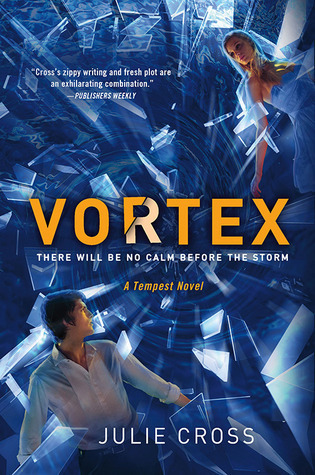
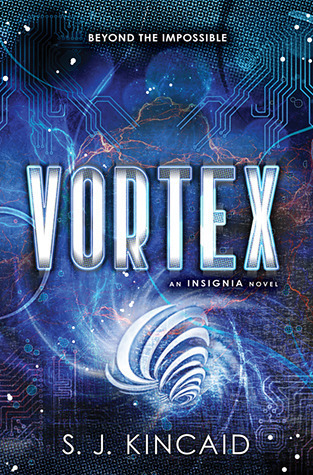
Both 2013
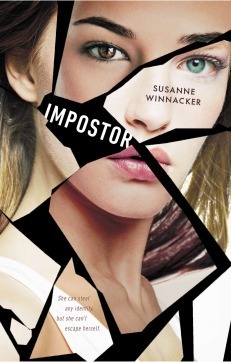
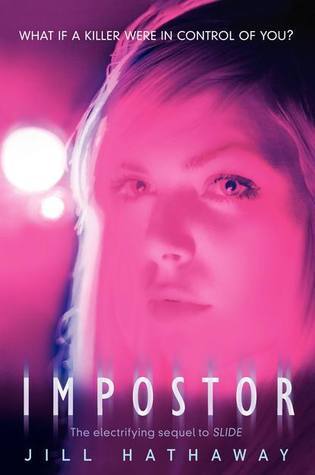
Both 2013
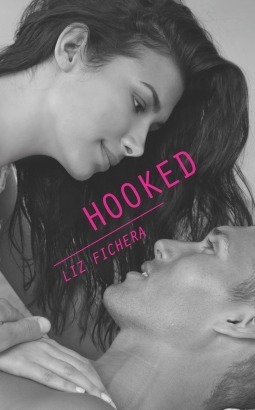
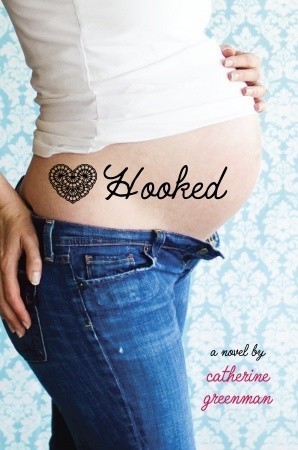
2013, 2011
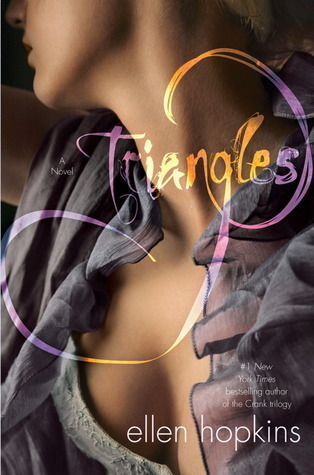

2011 (adult), 2013
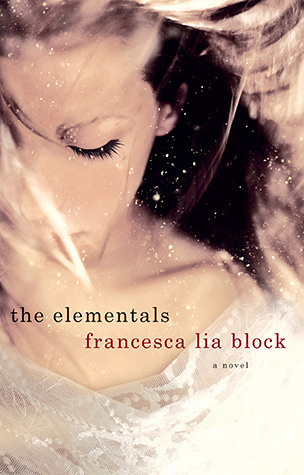
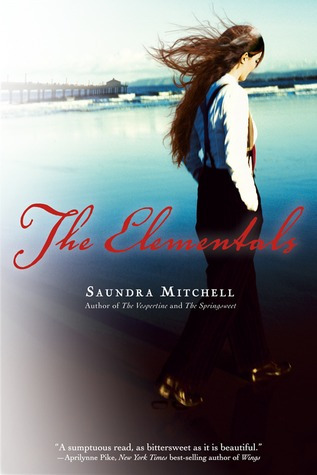
2012 (adult), 2013
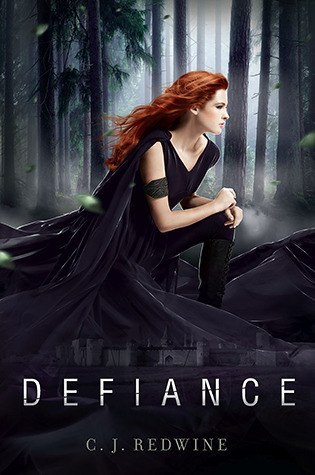

2012, 2011
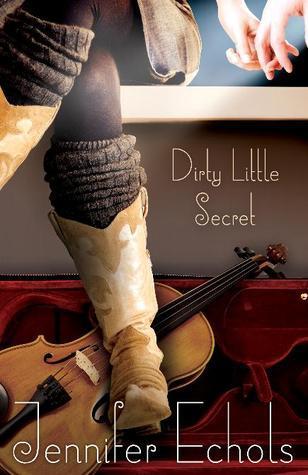
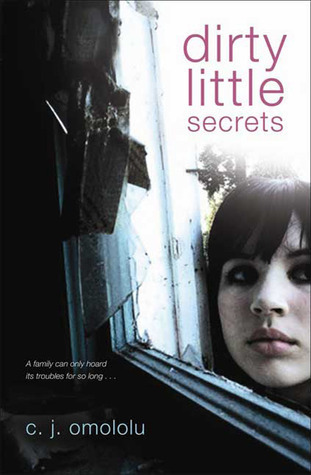
2013, 2010
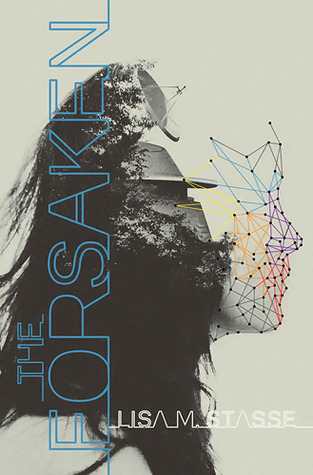
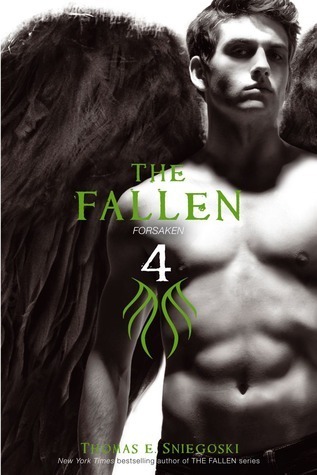
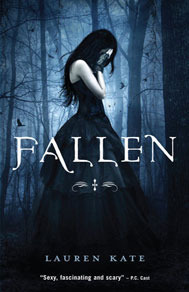
2012, 2012, 2009
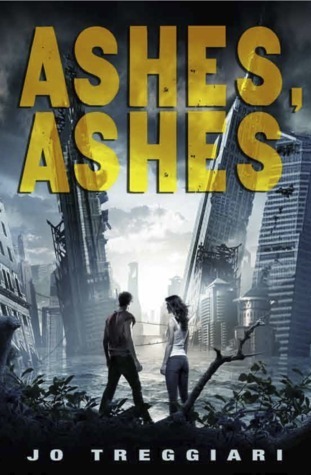

Both 2011
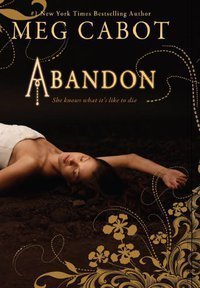
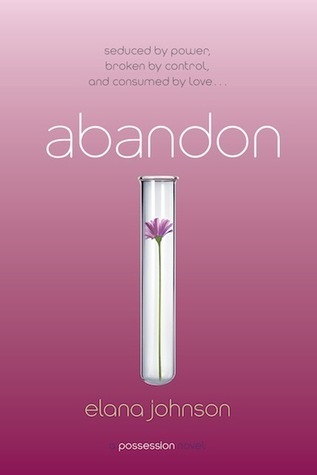
2011, 2013
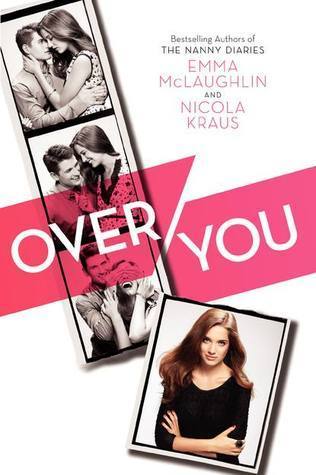
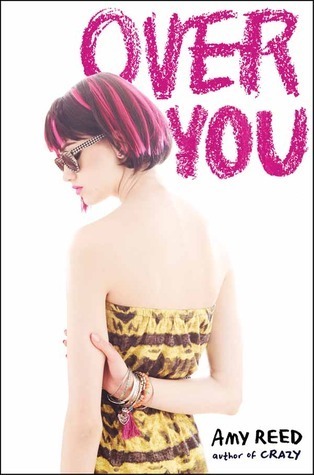
2012, 2013

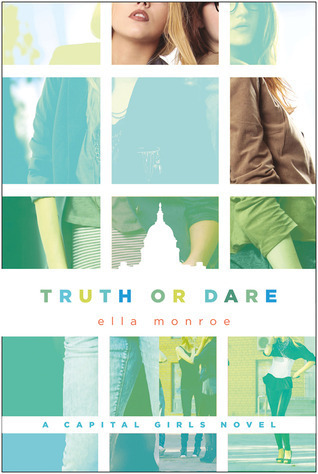
Both 2013
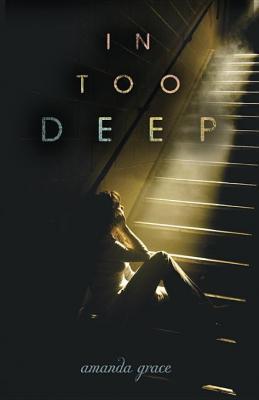
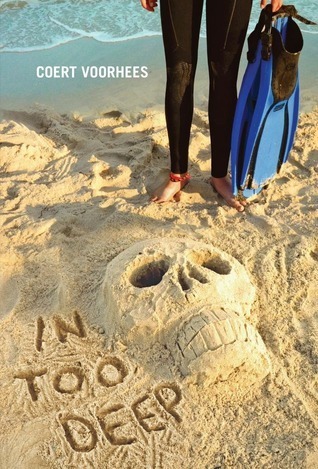
2013, 2013
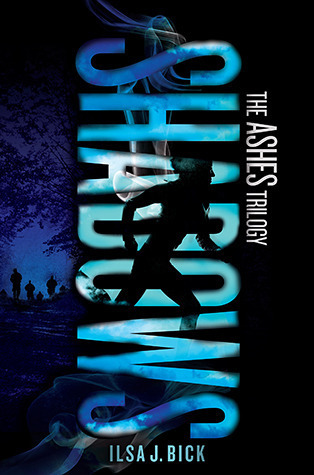
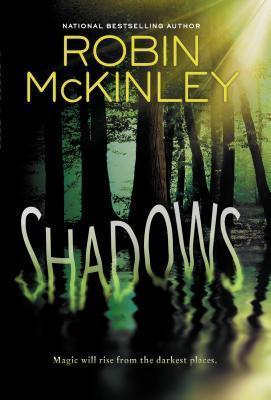
2012, 2013







 Related StoriesOver You by Amy ReedVortex by S. J. KincaidThousand Words by Jennifer Brown
Related StoriesOver You by Amy ReedVortex by S. J. KincaidThousand Words by Jennifer Brown
the purchaser for all YA materials at my library, I become very
well-acquainted with the titles of recently-published books. Sometimes,
after reading page after page of (pretty dull) reviews or synopses, they
all seem to blend together. I'll often think, "Haven't I seen that one
before? Purchased it already?"
The answer is "Yes, kind of."
I
took a look at a slew of YA books published within the past few years
and noticed that a remarkable number have the same or nearly identical
titles. I'm sure the list below is not exhaustive - what others do you
know of?


Both 2013


Both 2013


2013, 2011


2011 (adult), 2013


2012 (adult), 2013


2012, 2011


2013, 2010



2012, 2012, 2009


Both 2011


2011, 2013


2012, 2013


Both 2013


2013, 2013


2012, 2013







 Related StoriesOver You by Amy ReedVortex by S. J. KincaidThousand Words by Jennifer Brown
Related StoriesOver You by Amy ReedVortex by S. J. KincaidThousand Words by Jennifer Brown
Published on July 16, 2013 22:00
July 15, 2013
Hardcover to Paperback: Five Changes to Check Out
Ready to talk about more books getting makeovers in their paperback form? I have a slew of them, but I'm only going to talk about five for now (the rest are for future posts, no fear!). Let's talk about the good, the bad, and the ugly.
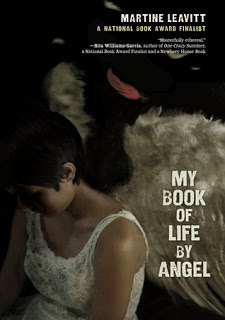
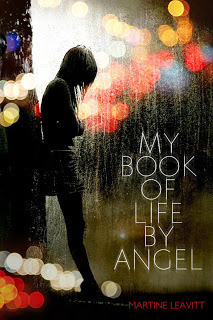
Martine Leavitt's My Book of Life by Angel is getting a really fresh look in the paperback, and I am a huge fan. I've read this one and while it wasn't my favorite book, I don't think that the original cover on the left was doing it much in the way of favor for teen readers. The story's set in the late 1980s or early 1990s, during an epidemic of prostitution and drug sales in Vancouver, British Columbia. It's a dark and gritty literary story, told in verse. The hardback cover wouldn't tell you that though. It looks almost dated, like a book that came from the late 1980s or early 1990s, rather than one published in 2012. It does angle Leavitt as an award winner though, which I find interesting since that's not on the paperback cover. In my mind, the hard cover looks like the literary book with award potential.
The paperback makeover, though, has total teen appeal. It shows this to not only be a dark and gritty story, but more than that, the new look reminds me of what Simon and Schuster did in their makeovers for Sonya Sones's books (you can see the cover of her newest, To Be Perfectly Honest , as an example). The longer I think about the change and the way it reminds me of the new Sones looks, the more I really like it -- I think they have exactly the audience who'll want to pick this book up with the new design. The very thin font for the title works for me, as well. And the pops of color actually add a bit of edge to the image for me in a way that the fairly stark hardcover image doesn't. Though I think the falling feather was meant to do that; it's symbolic, but that says more to me about the audience for the hardcover as opposed to the paperback here.
I never bought the hardcover for my library, but I plan on ordering the paperback when it comes out February 18, since I think it'll reach a whole new audience of readers.
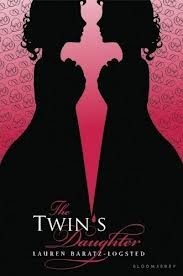
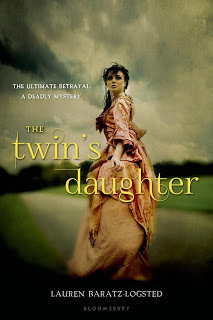
Lauren Baratz-Logsted's The Twin's Daughter -- which I read and reviewed a long time ago -- is coming out with a new look in paperback January 14. I love the hardcover look so much. I love that it features the twins, and that the image itself has the knife piercing through it (which fits the story). It's actually a pretty simple design, but it packs a punch with the pink and black. And I love the tiny drop of blood that works as the apostrophe for "Twin's." For me, this cover conveys the gothic feel of the book and it's iconic.
So the first thought I had on the paperback recovering is that the "t" in "Twin's" is the same font as the "T" on Twilight. I really am not a fan of the title font at all. Aside from not really making a lot of sense (if they are going for a Gothic-y font, they missed the mark a lot here), it's not consistent with the straight lines and the curved letters. Also, the kerning is a little off on "Twin's" between the apostrophe and the "s" (kerning is space between letters -- you want it uniform usually, and here there's a little bit too much space). The girl in the big dress looks like a throwback to all of the covers that kind of came out at the same time that The Twin's Daughter did in hardcover, in that it's fairly non-descript and non-memorable. And the tag line -- while it does tell what the story is about -- kills me: "The ultimate betrayal. A deadly mystery." I think why it kills me is because that is telling what the book is about, since the image on the cover is not.
For me, the big winner is the original cover. It tells you the story visually in such a careful and yet perfect way. The paperback looks like so many other covers and relies on the tag line to convey anything about the story inside.
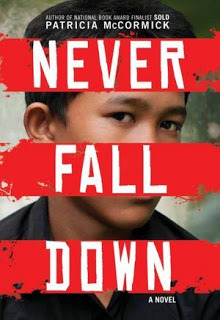
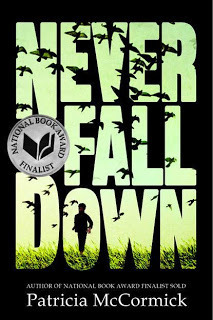
Patricia McCormick's Never Fall Down was one of those books that actually featured a person of color on the hardcover book. And it should have, since this is a story about a Cambodian boy. It's a near perfect cover for the story, and it quite fits with the look of the other books McCormick's published in recent years. It's simple, and yet it's also powerful. In many ways, I think it looks like an award-winning book. Obviously this is something I've been thinking about a lot, since I've mentioned it more than once in this post alone, but this cover is straight forward and you know from looking at it what it is about. And you know it's a "serious" book. You also know it's written by a National Book Award Finalist. The hardcover is a solid cover.
But I love the paperback. I love it. The paperback, to me, has so much more teen appeal. Why? It's not a face on a cover. While I applaud the design team for including a person of color on the hardcover, I do think the solid image of a face is still not the most memorable way for a book to stand out on the shelf (the fact that it is a person of color that makes it stand out says a lot about how rare this happens on covers). Never Fall Down's paperback look does a lot of things aesthetically that I dig: the title takes up almost the entire cover, and it's not done in a way that's just a font. There's movement and action within the font itself. It's the movement that stays with me -- and the fact the shades of green really do pop against the otherwise black cover. The impact is stronger than it is with the font on the hardback cover. I also think they did a good job designing the new cover to allow the National Book Award Finalist award to fit, without interrupting the image itself.
The paperback edition will be available in early 2014.
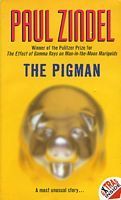
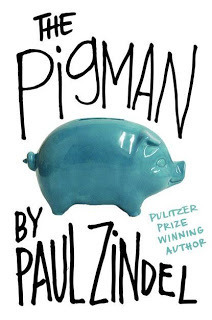
I think I've talked about how much I loved Paul Zindel's The Pigman when I was a middle schooler and then when I revisited it a couple years ago I not only loved it still, but I thought it was still relevant (minus some of the dating things with technology).
They're reissuing the book with another new cover in January. And I love it. I think that the cover on the left -- which is the trade paperback cover that's been available for a few years now -- is memorable and strong. I love the piggy bank, and I love that it's a bright yellow. But I think the redesign on the right gets so many things right, too, in a way that plays homage to the cover on the right. You have the piggy bank still. That font though. I think it's one of my favorites, and I love how they styled it, as well. It feels vey contemporary because of how simple and minimalist it is. The white background ties the entire thing together. It's fresh, and I think this cover will sell the book to another generation of teen readers in exactly the way it should.
Now I am ready to reread it again for myself.
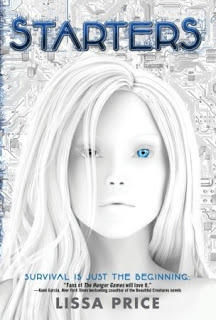
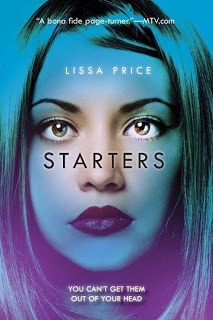
I think Lissa Price's Starters wins the award for most startling (and most baffling) makeover out of this set of changes. The hardcover on the left has always left me feeling really cold. It's so . . . white and so creepy because of that. It looks really young, as well, and it never really called to me. Kim read it and found it to be a really fun read.
Let's dissect the hardcover a bit. Besides being very white, the only color is through the form of a blue eye on the right and a brown eye on the left. There's also the blue from the title, and there's the blue tagline "Survival is just the beginning." Note, too, that Kami Garcia's blurb notes that this is a great book for fans of Suzanne Collins's The Hunger Games. Worth noting is the girl's face on the cover is unmarred by any text or anything. She is staring right at you.
The paperback redesign on the right. Aside from the fact it's no longer a white cover, we have a girl staring out at readers again, but this time both of her eyes are brown. And her eyebrows stand out, as do her lips, since she's wearing lipstick. She looks much older than the girl on the left, and her face is partially obscured by the title of the book. The author's name, too, is tattooed on her forehead. I've doubts the model here is actually a teenager, either. There's a brand new tag line for the book: "You can't get them out of your head." Then there's also the new blurb from MTV (rather than the one from Garcia), which simply calls the book "A bona fide page-turner."
I find the new look to be as cold as the original, but in a different way. It looks generic this time. So while the hardcover was cold in the creepy sense, the paperback is cold in the generic sense. I find the shift in how the book is being sold to readers interesting. The original sells it as a dystopian adventure a la The Hunger Games (both from the blurb and from the tag line) and in the redesign, it's now being sold as something different. Something that I actually can't even put my finger on -- it's called a page turner, but who are them? Why are they in my head? The girl on the cover doesn't add anything to suggest what kind of story this might be.
Even though I find the original cover cold and unappealing, I think it might be the better fit for the story. The paperback doesn't tell me anything and it doesn't suggest to me who the readership for the book might be, either. Starters is out in paperback on July 23.
What do you think? Agree? Disagree? Which of these covers does it better?






 Related StoriesHardcover to Paperback Switches: 6 to ConsiderPut a Bird on it: Cover Trend 2013Hardcover to Paperback: Six to Consider
Related StoriesHardcover to Paperback Switches: 6 to ConsiderPut a Bird on it: Cover Trend 2013Hardcover to Paperback: Six to Consider


Martine Leavitt's My Book of Life by Angel is getting a really fresh look in the paperback, and I am a huge fan. I've read this one and while it wasn't my favorite book, I don't think that the original cover on the left was doing it much in the way of favor for teen readers. The story's set in the late 1980s or early 1990s, during an epidemic of prostitution and drug sales in Vancouver, British Columbia. It's a dark and gritty literary story, told in verse. The hardback cover wouldn't tell you that though. It looks almost dated, like a book that came from the late 1980s or early 1990s, rather than one published in 2012. It does angle Leavitt as an award winner though, which I find interesting since that's not on the paperback cover. In my mind, the hard cover looks like the literary book with award potential.
The paperback makeover, though, has total teen appeal. It shows this to not only be a dark and gritty story, but more than that, the new look reminds me of what Simon and Schuster did in their makeovers for Sonya Sones's books (you can see the cover of her newest, To Be Perfectly Honest , as an example). The longer I think about the change and the way it reminds me of the new Sones looks, the more I really like it -- I think they have exactly the audience who'll want to pick this book up with the new design. The very thin font for the title works for me, as well. And the pops of color actually add a bit of edge to the image for me in a way that the fairly stark hardcover image doesn't. Though I think the falling feather was meant to do that; it's symbolic, but that says more to me about the audience for the hardcover as opposed to the paperback here.
I never bought the hardcover for my library, but I plan on ordering the paperback when it comes out February 18, since I think it'll reach a whole new audience of readers.


Lauren Baratz-Logsted's The Twin's Daughter -- which I read and reviewed a long time ago -- is coming out with a new look in paperback January 14. I love the hardcover look so much. I love that it features the twins, and that the image itself has the knife piercing through it (which fits the story). It's actually a pretty simple design, but it packs a punch with the pink and black. And I love the tiny drop of blood that works as the apostrophe for "Twin's." For me, this cover conveys the gothic feel of the book and it's iconic.
So the first thought I had on the paperback recovering is that the "t" in "Twin's" is the same font as the "T" on Twilight. I really am not a fan of the title font at all. Aside from not really making a lot of sense (if they are going for a Gothic-y font, they missed the mark a lot here), it's not consistent with the straight lines and the curved letters. Also, the kerning is a little off on "Twin's" between the apostrophe and the "s" (kerning is space between letters -- you want it uniform usually, and here there's a little bit too much space). The girl in the big dress looks like a throwback to all of the covers that kind of came out at the same time that The Twin's Daughter did in hardcover, in that it's fairly non-descript and non-memorable. And the tag line -- while it does tell what the story is about -- kills me: "The ultimate betrayal. A deadly mystery." I think why it kills me is because that is telling what the book is about, since the image on the cover is not.
For me, the big winner is the original cover. It tells you the story visually in such a careful and yet perfect way. The paperback looks like so many other covers and relies on the tag line to convey anything about the story inside.


Patricia McCormick's Never Fall Down was one of those books that actually featured a person of color on the hardcover book. And it should have, since this is a story about a Cambodian boy. It's a near perfect cover for the story, and it quite fits with the look of the other books McCormick's published in recent years. It's simple, and yet it's also powerful. In many ways, I think it looks like an award-winning book. Obviously this is something I've been thinking about a lot, since I've mentioned it more than once in this post alone, but this cover is straight forward and you know from looking at it what it is about. And you know it's a "serious" book. You also know it's written by a National Book Award Finalist. The hardcover is a solid cover.
But I love the paperback. I love it. The paperback, to me, has so much more teen appeal. Why? It's not a face on a cover. While I applaud the design team for including a person of color on the hardcover, I do think the solid image of a face is still not the most memorable way for a book to stand out on the shelf (the fact that it is a person of color that makes it stand out says a lot about how rare this happens on covers). Never Fall Down's paperback look does a lot of things aesthetically that I dig: the title takes up almost the entire cover, and it's not done in a way that's just a font. There's movement and action within the font itself. It's the movement that stays with me -- and the fact the shades of green really do pop against the otherwise black cover. The impact is stronger than it is with the font on the hardback cover. I also think they did a good job designing the new cover to allow the National Book Award Finalist award to fit, without interrupting the image itself.
The paperback edition will be available in early 2014.


I think I've talked about how much I loved Paul Zindel's The Pigman when I was a middle schooler and then when I revisited it a couple years ago I not only loved it still, but I thought it was still relevant (minus some of the dating things with technology).
They're reissuing the book with another new cover in January. And I love it. I think that the cover on the left -- which is the trade paperback cover that's been available for a few years now -- is memorable and strong. I love the piggy bank, and I love that it's a bright yellow. But I think the redesign on the right gets so many things right, too, in a way that plays homage to the cover on the right. You have the piggy bank still. That font though. I think it's one of my favorites, and I love how they styled it, as well. It feels vey contemporary because of how simple and minimalist it is. The white background ties the entire thing together. It's fresh, and I think this cover will sell the book to another generation of teen readers in exactly the way it should.
Now I am ready to reread it again for myself.


I think Lissa Price's Starters wins the award for most startling (and most baffling) makeover out of this set of changes. The hardcover on the left has always left me feeling really cold. It's so . . . white and so creepy because of that. It looks really young, as well, and it never really called to me. Kim read it and found it to be a really fun read.
Let's dissect the hardcover a bit. Besides being very white, the only color is through the form of a blue eye on the right and a brown eye on the left. There's also the blue from the title, and there's the blue tagline "Survival is just the beginning." Note, too, that Kami Garcia's blurb notes that this is a great book for fans of Suzanne Collins's The Hunger Games. Worth noting is the girl's face on the cover is unmarred by any text or anything. She is staring right at you.
The paperback redesign on the right. Aside from the fact it's no longer a white cover, we have a girl staring out at readers again, but this time both of her eyes are brown. And her eyebrows stand out, as do her lips, since she's wearing lipstick. She looks much older than the girl on the left, and her face is partially obscured by the title of the book. The author's name, too, is tattooed on her forehead. I've doubts the model here is actually a teenager, either. There's a brand new tag line for the book: "You can't get them out of your head." Then there's also the new blurb from MTV (rather than the one from Garcia), which simply calls the book "A bona fide page-turner."
I find the new look to be as cold as the original, but in a different way. It looks generic this time. So while the hardcover was cold in the creepy sense, the paperback is cold in the generic sense. I find the shift in how the book is being sold to readers interesting. The original sells it as a dystopian adventure a la The Hunger Games (both from the blurb and from the tag line) and in the redesign, it's now being sold as something different. Something that I actually can't even put my finger on -- it's called a page turner, but who are them? Why are they in my head? The girl on the cover doesn't add anything to suggest what kind of story this might be.
Even though I find the original cover cold and unappealing, I think it might be the better fit for the story. The paperback doesn't tell me anything and it doesn't suggest to me who the readership for the book might be, either. Starters is out in paperback on July 23.
What do you think? Agree? Disagree? Which of these covers does it better?







 Related StoriesHardcover to Paperback Switches: 6 to ConsiderPut a Bird on it: Cover Trend 2013Hardcover to Paperback: Six to Consider
Related StoriesHardcover to Paperback Switches: 6 to ConsiderPut a Bird on it: Cover Trend 2013Hardcover to Paperback: Six to Consider
Published on July 15, 2013 22:00



